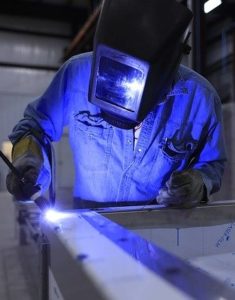
Commercial kitchens are demanding places. With orders and staff flying back and forth preparing dish after dish for ever-hungry customers, any time-saving technology can seem like a god-send.
So, the suppliers of the equipment those commercial kitchens need to run smoothly will innovate and advertise their intuitive smart control, their intelligent operations and their enhanced efficiency to bring buyers closer to cashing out and investing in their latest appliance.
Promising to make the work of over-burdened staff easier is no small selling point and proves a major factor in the final decision — but, alone, it is not enough to seal the deal.
There’s one thing that has been and always will be more important than all of those snazzy functions.
Build Quality
Commercial kitchens are notoriously tough environments. While it’s all well and good if your 
Besides choosing appliances which can save you time on various tasks, doing the cooking for you, you need to choose appliances with high build quality: appliances which are well put together. Read more about our recommended picks for the Top 5 Pieces of Cooking Equipment Every Commercial Kitchen Should Own featuring budget options and premium alternatives with outstanding build quality.
Because that’s what you need in a kitchen for it to be able to withstand the pressure of peak service times. You need machines which will not only make your work easier but last, too. Machines which you can rely on for years on end such as the Unox range of Combi Ovens. That means choosing appliances which are easy to use, which don’t complain if their doors are slammed shut, and which come with easy to clean and difficult to damage surfaces.
Choosing based on build quality comes down to two further choices. First, you’ve got to:
Pick Quality Materials
Choosing equipment and prep areas constructed out of durable materials is one step in the right direction.
One tip is to avoid flimsy plastic. Not only infamously bad for the environment, plastic parts - whether present in storage cupboards, equipment or in grease traps - often age badly, are often easily broken, and are often difficult to replace. Steering clear of plastic bits is a sure fire way of ensuring you don’t end up having to call up manufacturers wondering about repairs just a few months after the sale.
In fact, something similar can be said of another breakable: glass. Where it is present in your kitchen - in the form of oven doors or even fridge shelves - choosing the toughest you can buy is certainly a good idea, while it goes without saying that you won’t want to be buying utensils - 
Instead, look to kit your kitchen out in as much stainless steel as possible. There’s a reason this shiny metal is a staple in the modern professional kitchen: it doesn’t rust, it doesn’t crack and though it might suffer from a scratch or two, these injuries will only ever be cosmetic. Easy to clean, stainless steel doesn’t make a good home for bacteria and so, is safe for kitchen use; non-reactive, stainless steel surfaces and utensils are also perfectly fine for producing acidic foods without the risk of ruining the flavour (as with aluminium). Read more about Basic Care for your Stainless Steel Cookware.
With the materials decided on, next you’ll need to:
Choose a Quality Design
Buying a durable appliance is a great idea…unless it’s difficult to use, and you end up spending your day-to-day dreaming of a time in the distant future when you’ll be able to justify replacing it.
Look for efficiency and intuition: doors and drawers which open just far enough and which close correctly without bouncing back open if you push them too hard; handles which are fixed firmly in place and are just the right shape for use and for ease of cleaning; quality hinges to handle repeated opening and closing of doors; edges which aren’t too sharp and don’t extend too far out, to be bumped into every time someone passes.
Choose designs which won’t get in the way of the smooth operation of your kitchen.
While impressive settings and breathtaking controls can make an appliance more appealing, they also make everything much more complicated — and complication makes for complications. As you put your commercial kitchen together, be sure to remember that gizmos and gadgets won’t save you if the doors of your oven keep falling off or if your fridge freezer breaks down the day after the warranty expired. While the additional features can make your job easier, remember that build quality should always be a priority.


